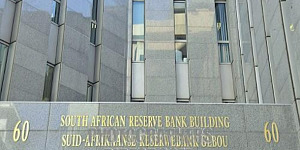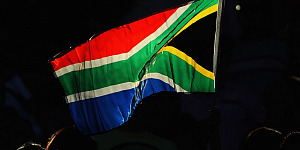South Africa's central bank left its benchmark repurchase rate at 6.75 percent, citing "heightened uncertainties in the economy" as capital investments continue to contract due to low business confidence and political uncertainty.
The South African Reserve Bank (SARB), which surprised investors by cutting its rate by 25 basis points in July, said three members of its 6-member monetary policy committee wanted to cut the rate by another 25 points while the other three wanted to retain the rate and ultimately held sway.
In an update to its economic forecast, SARB raised its 2017 growth forecast marginally to 0.6 percent from 0.5 percent and narrowed the output gap to minus 1.7 percent from minus 1.9 percent.
For 2018 and 2019 the central bank maintained its growth forecasts of 1.2 percent and 1.5 percent, respectively. In 2016 the economy grew by only 0.3 percent.
Despite positive growth in the second quarter after two consecutive quarters of contraction, SARB Governor Lesetja Kganyago said a fall in fixed capital formation showed underlying weakness in the economy and of particular concern was a 6.9 percent drop in private sector fixed investment.
"This subdued outlook is expected to persist against a backdrop of continued political and policy uncertainty," Kganyago said, adding weak investment doesn't bode well for employment, with the unemployment rate steady at 27.7 percent in the second quarter.
The public sector, which used to be the main source of employment growth, is now also likely to shed jobs as fiscal constraints intensify.
Although SARB expects inflation to remain within its 3-6 percent target range in coming years, Kganyago said a number of risks to this outlook had increased and "the MPC assesses the risks to the inflation outlook to be somewhat on the upside."
The exchange rate of South Africa's rand remains a key upside to the inflation outlook along with political risks, which he said were "now more imminent" along with the risk of further ratings downgrades, given the increased fiscal challenges and political uncertainty.
A further upside risk to inflation stems from possible large increases in electricity tariffs, with a tariff increase of 20 percent boosting the inflation forecast by 0.2-0.3 percentage points.
The central bank is also concerned that inflation expectations of business people and trade unions remain above or close to 6 percent for the next two years.
"Lower inflation expectations among key price setters is an important element in reducing inflation in the future, thus enabling lower nominal interest rates," Kganyago said.
South Africa's inflation rate rose to 4.8 percent in August from 4.6 percent and SARB retained its forecast for inflation to average 5.3 percent this year, down from 6.3 percent last year. For 2018 it raised its forecast slightly to 5.0 percent from 4.9 percent and to 5.3 percent in 2019 from 5.2 percent.
SARB currently targets inflation in range of 3-6 percent but Kganyago said last month this 18-year old target should probably be lowered to bring it into line with other emerging markets.
He suggested that a target of 3-4 percent would be more in line with that of South Africa's trading partners, adding that Brazil had recently lowered its target to 4.0 percent and India last year adopted a 4 percent target.
After hitting a record low of almost 16.9 to the U.S. dollar in January last year, the rand has risen, supported by demand for high-yielding emerging market bonds amid easy global monetary policy.
But the rand remains very sensitive to political developments, weak prospects for economic growth and is down 2.8 percent against the U.S. dollar since the July when SARB cut its rate.
Today the rand was trading around 13.3 to the dollar, up 3 percent this year.






































